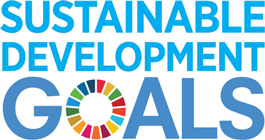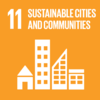Sustainable Cities and Communities
Summary of Discussion
Q8a. How do we encourage local residents and citizens to be involved in the planning and realization of inclusive and sustainable cities?
- Develop a “kids-only” table, engage the youngest
- Support organisations that enable communities to take care of their own spaces
- Public partnerships with local groups
- Engage communities in design, co-create!
- Provide funding for lower income groups to participate
8.How can communities and civic-led initiatives play a part in creating sustainable and inclusive cities and green spaces?
- Creating awareness
- Advocating
- Excelling at outreach
- They can play a part when enabled and listened
7.Beyond governments, how can other large organizations contribute to planning and implementing green infrastructure and green spaces in cities?
- Offering space for dialogue, creating inclusive conversations and co-learning
- Mobilizing funding to support the execution of solutions
- Non-for-profits can engage communities locally and form public-private partnerships
- Being advocates, promoting new policy and designs
- Supporting research
- Becoming role models
- Creating space for communities to lead projects
- Funding green infrastructure projects
- Bringing innovation forward
Q6a. How can we avoid the gentrification effect of greenspace investments in low moderate income communities?
- Park development projects to be twinned with affordable housing development
- Apply the “just-green-enough approach”
- Incorporate green solutions to existing spaces
- Ensure all neighborhoods have greenspace investments
- Incorporate green designs into every urban planning
6.How can cities overcome access issues in order to offer safe, inclusive and accessible green spaces for all?
- Listening to people who live and work in the community and take note of their priorities
- Addressing the needs of the most vulnerable
- Bringing inclusiveness into the design of the green spaces
- Involving communities in the planning and design of green spaces, and their management
- Having diverse leadership at the elected official level
- Developing partnerships between urban professionals and city government
- Engaging with as many stakeholders as possible
- Making green spaces close to residential areas
- Designing great public transport to access them
- Avoiding entrance fees to green spaces
- Designing green spaces that offer activities for all different groups of people
5.How can we effectively measure and value the impact of green spaces in urban places?
- Need to define what we are measuring the impact of
- Need to define why we are measuring it
- Look at who uses it, but also who does not to evaluate accessibility
- Look at who has access to it
- Look at who designed it
- Look at land value adjacent to green spaces
- Look at crime statistics
- Look at health outcomes (mental health, obesity…)
- Look at air filtration, water filtration, flood protection, cooling effects
- Partner with local organizations and universities to access the data needed
- Think of metrics and valuation of nature, not only economic ones
- Third-party measurement and analysis by economists and academics
- An example from a water perspective, “swimmable, drinkable, fishable”, shows the importance of relatable indicators
4.What kind of funding or financing structures could be effective for implementing green, resilient infrastructure in cities?
- Tax revenue, e.g. carbon tax
- Private investment
- Green bonds
- Partnerships across multiple orders of government
- Philanthropy, although not alone
- Bottom-up crowdfunding
- Long-term capital investment vs. short-term outlooks
Q3a. What are the most pressing issues and challenges that cities are facing today?
- Climate change
- Sustainably meeting the needs of a growing urban population
- Misalignment of interests
- Land being a finite resource
- Old-fashioned regulation favoring traditional grey infrastructure
- Gentrification
- Lack of public transportation
3.What are the barriers to planning for and/or implementing green infrastructure initiatives in cities?
- Lack of funding and investment
- Perceived as costly
- Lack of cross-sector coordinated governance
- Political disengagement and lack of an organized community voice
- Perceived as less effective vs. traditional
- Its return on investment is still not well understood
- Fear and risk aversion
- Expectations placed on public agencies only
- Rapidly growing cities
- Need for innovation to keep pace
- Need for commitment to maintenance
- High value of land in urban areas
- Short term outlook
- Lack of awareness and public apathy: need to change current mindsets, educate
2.What are some of the best ways that green infrastructure can protect cities from future climate risks and improve their resiliency?
- Need to both protect cities from climate change, but also protect climate from cities
- Green walls, roofs, parks – clean the air, provide flood mitigation, habitat for life, reduce urban heat island effects.
- Involving schools and the school landscape as a venue for community based action with respect to climate change projects
- Parks are a major area to address water quality, air quality, cooling temperatures and storm water capture
- Building green infrastructure
- Building energy neutral public housing
- Need to enable people in the communities to contribute meaningfully to build uniqueness and identity
- Working towards sustainable food sources and designing sustainable waste management
1.What kind of city would you want to see in the future? What makes a livable city?
- A green, inclusive, diverse, prosperous, secure, environmentally designed, vibrant city
- A city where sustainability is at the heart of its design
- A city where green infrastructure contributes to equity, livability, mental health and resilience
- A city that is affordable and equitable: with affordable housing, employment opportunities, sustainable transport infrastructure, education and medical resources, arts and culture
- Great parks! They improve health, social cohesion and mitigate climate change among other environmental problems
- A city with innovative green spaces and recreation facilities:
- A city “rooted in food, family and future”
- A city that involves its residence in decision-making processes
- A walkable city
Meet our Guest Contributors
The Trust for Public Land
Evergreen
The Trustees of Reservations
New York City Department of…
Toronto Public Space Commit…
TAS
Civic Action
Green Roofs for Healthy Cit…
City of Toronto
TD Bank Group
The Nature Conservancy
TD Bank Group
Session Moderator
Canada




Posts
Back to Top